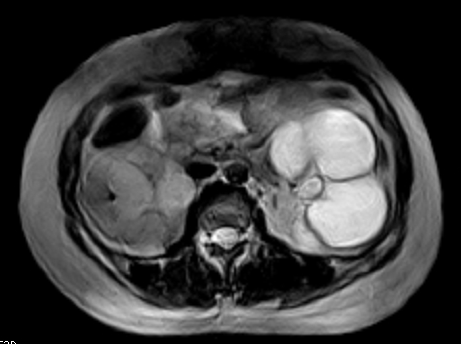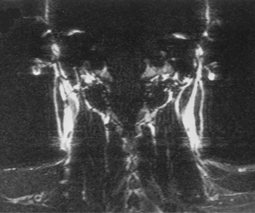|
I would consider excellent field homogeneity to be one of the most important criteria in selecting a magnet for imaging.
Magnet homogeneity directly relates to image quality and various artifacts. The types of problems associated with poor magnet homogeneity include: shading, spatial distortion, blurring, intensity loss, curved slice profiles, and zebra (moiré) banding artifacts. These image quality issues are most noticeable for large field-of-view studies and whenever gradient echo and fast/echo-planar sequences are used. |
|
One of the more commonly observed effects of poor homogeneity is seen on images using spectral fat suppression techniques. Fat and water resonances are separated by 3.5 ppm so any inhomogeneity (due to the underlying magnetic field irregularities or distortions created by the patient) close to or exceeding this value results in poor fat suppression. |
To perform MR spectroscopy (MRS), even higher levels of homogeneity are required, as the proton resonances you are trying to separate may differ by much less than 1 ppm. In addition to static homogeneity, for MRS it is also important to consider the temporal stability of the field. In other words, how long can the promised 1-ppm homogeneity be maintained? Is there drift in the field? If the spectral lines of interest are separated by only a few ppm, then temporal instability and magnet drift may ruin an experiment lasting more than a few minutes.
If you are considering purchasing a permanent magnet system, it is important to ask about the temperature stability of the field. If the room temperature rises by a few degrees, by how much will the field change or lose homogeneity?
If you are considering purchasing a permanent magnet system, it is important to ask about the temperature stability of the field. If the room temperature rises by a few degrees, by how much will the field change or lose homogeneity?
Advanced Discussion (show/hide)»
No supplementary material yet. Check back soon!
References
Jackson EF. MR Acceptance Testing and Quality Control (pdf). American Association of Physicists in Medicine Annual Meeting, 2009.
Jackson EF. MR Acceptance Testing and Quality Control (pdf). American Association of Physicists in Medicine Annual Meeting, 2009.
Related Questions
An MR salesman claims his scanner has better "homogeneity" than that of his competitor. What is he talking about?
An MR salesman claims his scanner has better "homogeneity" than that of his competitor. What is he talking about?


